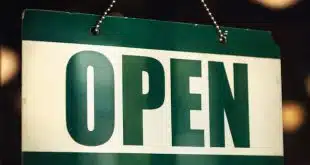Some two-and-a-half years after it started, the Federal Reserve’s project to make U.S. payments faster and more secure is laying the groundwork for private industry to come up with something better than the mishmash that U.S. payments are today, but tangible results still could be years away.
Fed officials and others involved in the sweeping Payment System Improvement project gave several hundred attendees at the BAI Payments Connect 2016 conference in San Diego an update on their work this week.
Lest anyone be confused, the Fed itself, which already runs one of the nation’s two automated clearing house switches, is not trying to supplant existing payments players, according to Sean Rodriguez, senior vice president and industry relations director at the Federal Reserve Bank of Chicago. Instead, project leaders say the Fed is attempting to find out what banks, merchants, and consumers want and need to speed up payments and make them more secure, and to improve the overall payment experience.
“What we are attempting to do is [set] up processes, have it be complementary to market developments and not get in the way of market developments,” Rodriguez said.
Rodriguez chairs the 320-member Faster Payments Task Force, one of the improvement project’s two such groups. The other, with 180 members, is the Secure Payments Task Force. The potentially unwieldy groups are led by much smaller steering committees. Members come from financial institutions, tech companies, government agencies, consumer groups, and some retailers.
One of the first tangible results of the security task force’s work will be more frequent publication of Federal Reserve data about fraud and other security-related issues, according to Todd Aadland, the task force’s chairman and a senior vice president in the Federal Reserve System. “We’re going to produce that and publish that in the market on an annual basis going forward,” he said.
Aadland noted that about 30 countries have or are in the process of implementing faster-payment systems, but said the downside can be more fraud as criminals take advantage of unanticipated weaknesses. “Some of those countries saw a very sharp uptick in fraud losses shortly after their implementation,” he said.
The Faster Payments Task Force, meanwhile, has gone through the tedious process of compiling a payments glossary, and in January published a 32-page “Faster Payments Effectiveness Criteria” document covering everything from authorizations, ubiquity, interoperability, formats, settlements, transaction irrevocability, and numerous other topics.
Both task forces are expected to complete major reports in 2017. The Faster Payments Task Force is expected to eventually review proposals for speedier payment systems once its criteria are fine-tuned.
The update was just one of several sessions at the BAI conference devoted to the issue of faster and more secure payments as industry players such as The Clearing House Payments Co., operator of the nation’s other ACH switch, ACH governing body NACHA, and other companies work on plans to reduce the time between transaction origination and funds availability.
The nation’s movement toward faster payments took a step forward with Early Warning LLC’s announcement Wednesday that it is now processing real-time peer-to-peer payments for Bank of America Corp. and U.S. Bancorp. Customers of these banks can send payments via mobile or online banking apps to other customers of either bank, who would then have immediate funds availability. The two financial institutions account for 22 million mobile-banking customers. Transactions are being handled by the clearXchange P2P platform, which the bank-owned Early Warning acquired last year.






